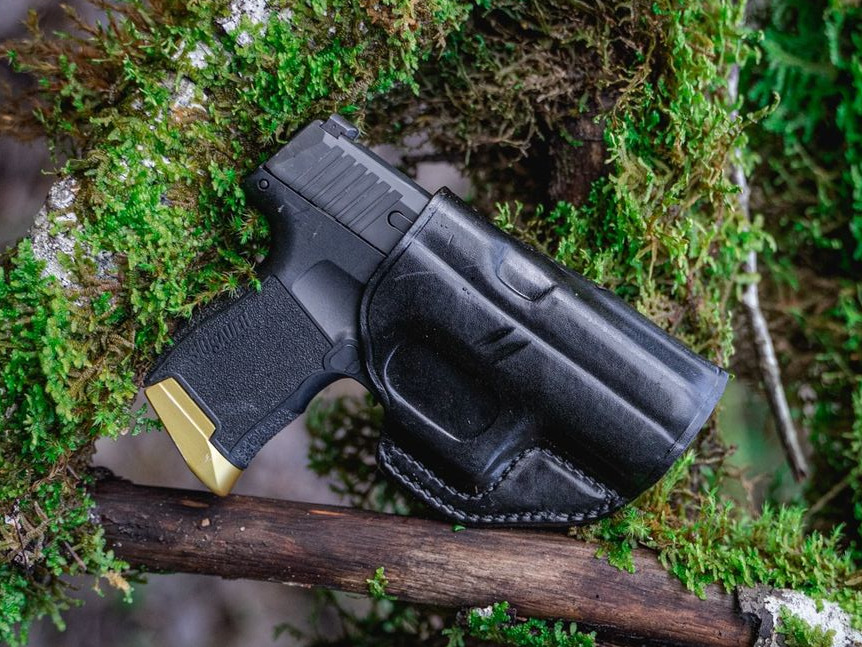Although KYDEX® / thermoplastic holsters are often the best choice for many applications, there’s still something to be said for real leather. Man-made materials certainly can’t beat leather for its natural beauty. Leather has an elegance that no other holster material can provide. It also has other pluses to it that continue to make it one of the better holster materials.
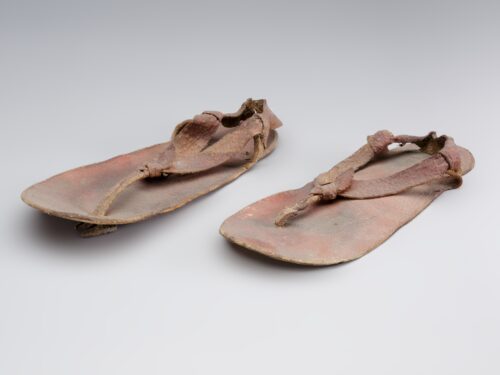
Art of Leather Making
Leather making is an ancient art, possibly dating as far back as 20,000 BC. Paleolithic cave drawings depict early man working leather. Leather sandals, bags and other article have been found in Predynanstic Egyptian tombs dating from before 5,000 BC.
The hides and skins from almost any animal can be converted to leather. The pelt of a full-grown or larger animal is called a hide, such as cowhide, steerhide and horsehide. The pelt of a reptile, fish or smaller or juvenile animal is called a skin, such as snakeskin, sharkskin, sheepskin and calfskin.
Cowhide and steerhide are the most commonly used leathers for holsters. Holsters are also available in more exotic leathers, such as horsehide, water buffalo, elephant, hippo, camel, kangaroo, bison, sharkskin, stingray, alligator, crocodile, ostrich, lizard skin or snakeskin.
As of January 1, 2020, due to ill-conceived state legislation, you cannot buy leather products made from alligator, snake, or crocodile skin in California. Let’s look at the facts. These leathers are made from the skins of farmed reptiles. Farming has reduced poaching, taking pressure off wild populations, which is obviously a good thing.
Although exotic leathers are more expensive, and often used more for their appearance, some of the exotic leathers do provide better moisture and wear resistance than cowhide. Horsehide and sharkskin are the most widely used exotic leathers.
Horsehide has a finer pore structure than bovine leathers (cowhide and steerhide), making it slightly less porous to moisture. Horsehide is often employed in the construction of holsters that may be exposed to excessive perspiration, such as inside the waistband (IWB) holsters.
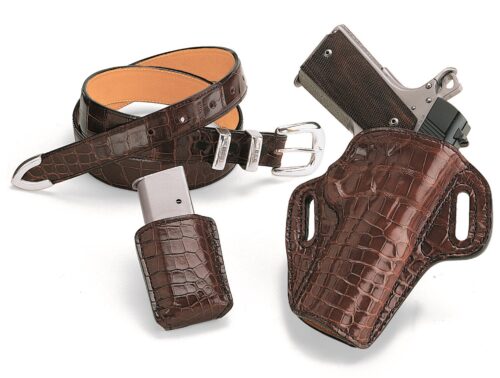
Despite commonly held beliefs to the contrary, horsehide doesn’t offer any real advantages over cowhide and steerhide, aside from slightly better moisture resistance due to its tighter grain structure. The less-porous dense structure of horsehide make it more difficult to work with and get a good form of the weapon during the molding process, but it can be done. Cowhide and steerhide are more affordable (when comparing similar grades), simply because there’s a greater supply.
Sharkskin is a widely utilized exotic, both for its beauty and its durability. It has a unique grain structure that’s very attractive and adds a little luxury to any holster. Sharkskin is also incredibly tough and scuff-resistant.
The hide or skin of an animal must be treated to slow its natural decomposition and prevent stiffening before it becomes workable leather. Pelts are first cured and cleaned. The pelts are then tanned with oil, vegetable tannins or minerals. Tanning chemically stabilizes the collagen in the pelt, making it relatively insoluble and more resistant to rotting and the damaging effects of water and heat. After tanning, the leather may then be dyed and given its final finish.
Vegetable tanned leathers are generally used for holsters. Vegetable tanning produces plumper, firmer and more water-resistant leather than other methods of tanning. In vegetable tanning, the animal hides or skins are treated with vegetable tannins. Tannins are soluble astringent complex polyphenols found in most plants. The term tannin was originally derived from the use of tannins in tanning. Vegetable tanned leathers are not treated with any salts. Perspiration and humidity have much more significant effect on damaging effect than any traces of residual chemicals from the tanning process.
You will often see the terms genuine leather, top grain leather and full grain leather. The term “genuine leather” has become a marketing phrase that is synonymous with lower quality leather.
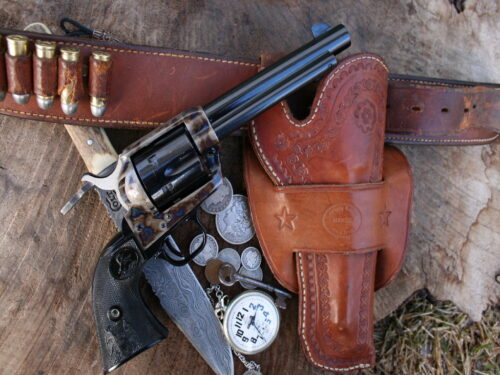
Full grain leather is the highest quality of leather. It’s also the most expensive. Full grain leather is the entire hide of the animal once the hair has been removed and the pelt is tanned. The natural grain fibers make it strong and durable. The hardness of full grain leather makes it an outstanding holster material.
Top grain leather is the second highest grade of leather. It has the outermost layer of the hide removed. It is thinner and more workable than top grain leather, as well as less expensive. It is not quite as tough as full grain leather, but is still a durable, high-quality product that’s excellent for holster making.
Hides prepared as top grain leather may be embossed and faux finished to look like exotic leather. Often referred to a corrected leather, this is an excellent option for those who are looking for an exotic leather look without an exotic leather price or where the purchase is prohibited.
Premium Center Cut Steerhide™ is a propriety term used by Galco Gunleather. Premium Center Cut Steerhide is steerhide with the inner and outer layer removed that’s been treated at the tannery in such as way as to retain its lateral strength, while providing a soft inner layer.
Leather is a natural product and will tend to break down over time without proper care. With a little care, a well-constructed leather holster can provide many years of dependable service.
Properly cared for, a leather holster will outlast synthetic materials. A good leather holster can last a lifetime. There are numerous examples of holsters dating back to the Old West that are just as serviceable today as they were back when they were made.
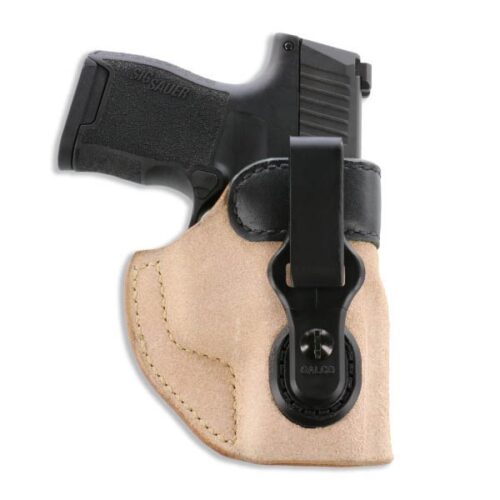
Pluses of Leather
Aesthetic qualities aside, leather has many pluses, which are why it is still popular today. The most important characteristic of leather is its fine grain structure. The fibrous structure of leather gives it great strength and resistance to punctures and fatigue. It also helps to protect and cushion the weapon, as well as permitting a quiet draw.
Leather has other advantages, as well. Unlike many materials, leather can perform dependably in a wide variety of temperatures without breaking or melting. Another advantage of leather is comfort. Leather feels better against the body than many synthetic materials. These features continue to make leather one of the better materials for holster construction.
A good leather holster will be precision molded by the maker to specific firearms. It will be tight at first by design, since the leather fibers will relax to the proper fit with use, forming itself around your handgun. A break-in period may be needed, much as with leather shoes or boots. If a new holster has tension screws, these will need to be adjusted.
One popular “test” of retention, is to hold a holster with a verified unloaded gun upside over a couch, soft upholstered chair or bed down and shake it. This proves little in so far as safety and functionality are concerned. You need to consider the specific use of the holster. Many leather holsters are designed to provide proper retention when worn and tensioned with a belt holding the holstered firearm in place.
Many feel that a quality leather holster will cause less wear on the finish of a firearm. This is debatable. All holsters, whether leather or hard polymer will wear the finish on your firearm over time. In my experience, a properly fitted hard polymer holster won’t cause wear any quicker than a leather holster. What really causes wear is dirt and debris trapped inside the holster.
A lined holster or smooth leather holster pocket will delay but not prevent holster wear on the gun’s finish. Smooth lined holsters or smooth leather holster pockets are better in this regard than suede, as suede lining acts tens to trap dirt and debris. They also provide a faster and smoother feel on the draw.
Some Final Thoughts
Although you can expect to pay more, a fine leather holster is an investment that can provide many years of service, although it does require a little care. Not only does leather offer a classiness that no synthetic can match, it provides some unique advantages that continue to make it the preferred choice of many gun owners.
*The views and opinions expressed on this website are solely those of the original authors and contributors. These views and opinions do not necessarily represent those of Spotter Up Magazine, the administrative staff, and/or any/all contributors to this site.
